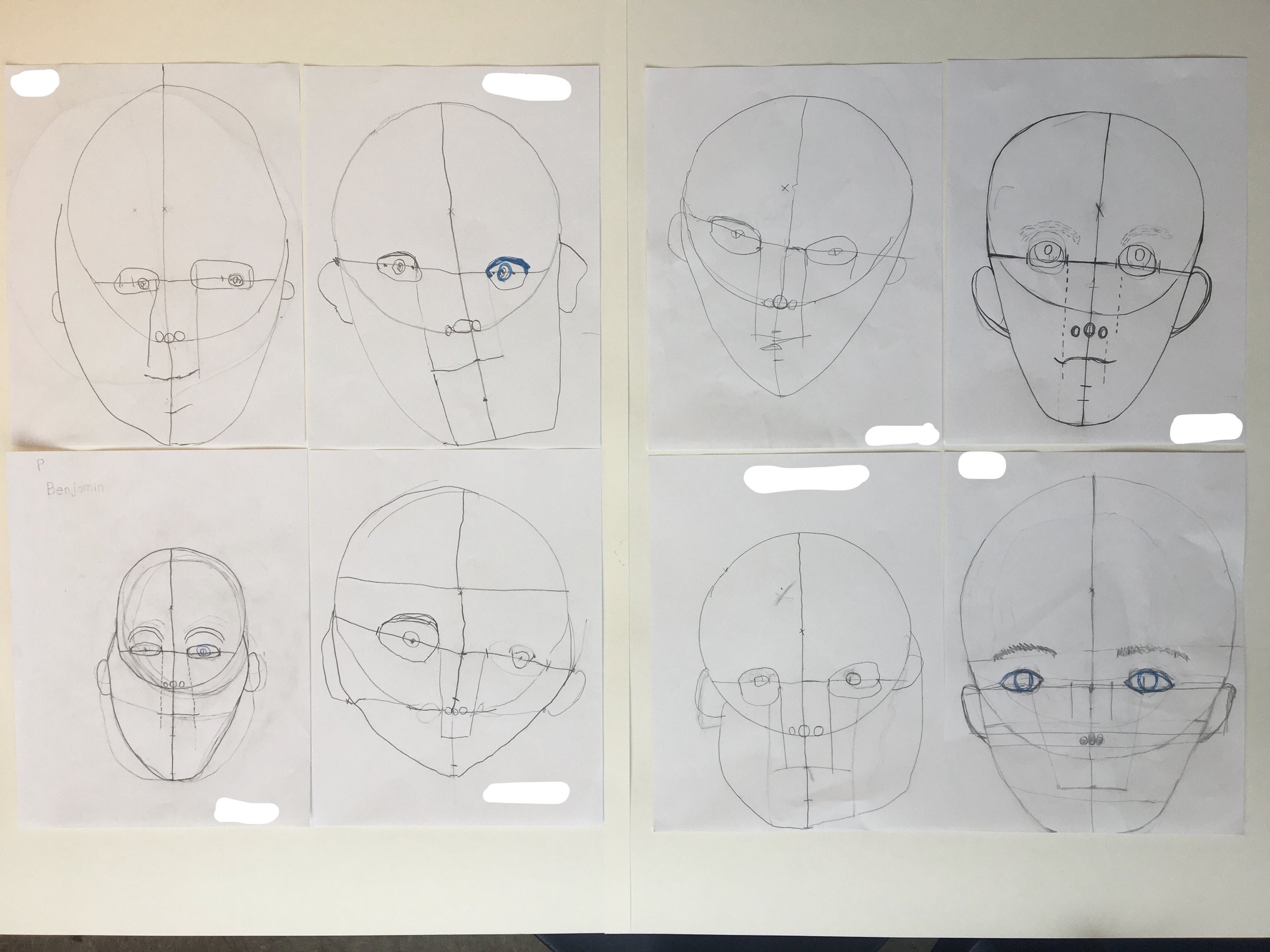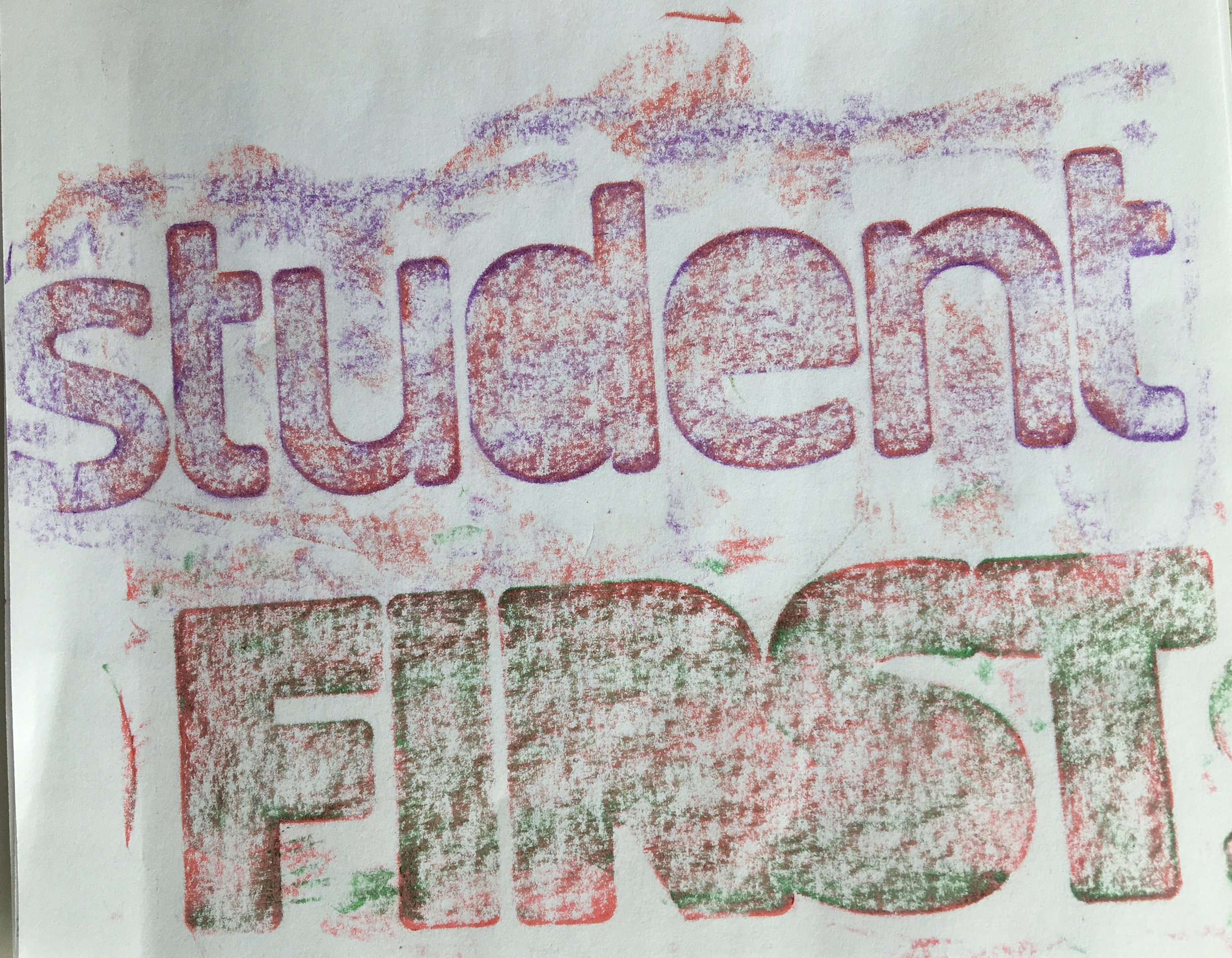I took my students in the “Modified” and “CASP” program to the Musee Beaux Arts to participate in the “Sensory Based Explorations of the Museum” program.
I tied the programming into the curriculum that I have been teaching at school. We made connections between a large sculpture of a head to the lesson on face proportions that I had taught at school. Students made observational sketches.
In class, we have also been learning about the Colour Wheel and had the chance to look through various coloured lenses at huge towering sculptures at the MBAM.
We contemplated shape and pattern later on, observing a large powder coated steel sculpture and making our own geometrical formations with the magnet toys provided by the MBAM in the sensory supplies pack.
Students practiced life skills such as taking a school bus, walking with the group, not touching the art, moving from one room to another, self-soothing using headphones & fidget toys. For many students, this was their first museum/gallery experience. Overall, they were very excited!
You can find out more about this valuable programming for learners on the Autism Spectrum at the links below:
https://www.mbam.qc.ca/en/activities/a-sensational-supply-pack-for-a-sensory-based-exploration-of-the-museum/
https://mhrc.emsb.qc.ca/inspirations/articles/mmfa-presents-supplies-pack-for-families-of-autistic-children



















































































































